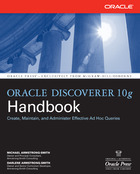During a recent consulting engagement I was asked about dashboards and where one should begin when the boss comes in and says I want a dashboard. I decided what I needed to do was step back and look at the dashboard concept, then explain my understanding in simple terms. I share those thoughts here and invite your comments.
Dashboards are unique to an organization and what works in one place will not be suitable in another. But of course, it all depends on your definition of a dashboard. The one that I like and the one that keeps me out of mischief is this one:
A dashboard or dash board is a panel located under the windscreen containing indicators and dials such as the tachometer / speedometer and odometer. I bet you never thought it was so easy.
Seriously, look again at this definition and you will see the foundations of business dashboards. It is not the dials such as the tachometer, odometer and fuel gauge that are important. It is not the numbers either.
What is really important is the meaning or significance (aka the KPI) that is applied to the numbers. Thus, depending upon the situation, a speed of 100 mph might be considered excessive, particularly if being chased by an irate police officer down a busy city street. Do the same thing on a race track and you might be considered a menace for going too slow. But do 100 mph on an autobahn in Germany and no-one will bat an eyelid because it is perfectly acceptable. You can see that the gauge, in this case the speedometer and the 100 mph reading, is by itself meaningless as a KPI. It is only when you apply the criteria which states that 100 mph must be highlighted in red because it is excessive that a real KPI is born.
The concepts of dashboards in automobiles and in business are the same - they give us a snapshot of critical information at a moment in time. If you happen to be running out of fuel the dashboard will bring this fact to your attention. It does this by turning on a light or sounding a bell when a certain low point in the fuel tank is reached.
The vehicle dashboard needs to provide enough pertinent information so that informed decisions can be made as to how the vehicle is functioning.
Business dashboards need to provide enough pertinent information to the manager or executive so that they can make informed decisions as to how the department or company is functioning. Just like with a vehicle, a corporate dashboard needs to provide all of the critical information that is needed to run the organization's daily operations.
Most corporate dashboards are a snapshot in time, typically midnight, that tell an organization if it is spending cash too fast; or whether the percentage of patients who needed a repeat visit is higher than 5%; or whether the number of requests for service this week exceeded the number from last week by more than 10%. The common factor here is that a rule is being applied to the data to indicate that something needs to be brought to someone's attention.
In a business, you can imagine that every employee has a steering wheel and an accelerator pedal. However, it is not necessary that everyone gets the same dashboard. Since the user roles are different not everyone needs the same level and kind of information. The worker bees need to work, the managers need to manage, and the executives need to improve their golf handicap. Typically, higher executives want to manage by exception and will only become really interested when something out of the ordinary happens.
If an organization is truly managing by exception then it should have a goal to move routine work from the manager to the employee, thus leaving the manager more time to manage. By creating a dashboard that displays the KPIs that the manager is interested in, a quick glance to see that all is green is all that is needed. Good KPIs, and thus good dashboards, reduce micromanagement which is good for everyone involved.
Now that reminds me, golf anyone!





